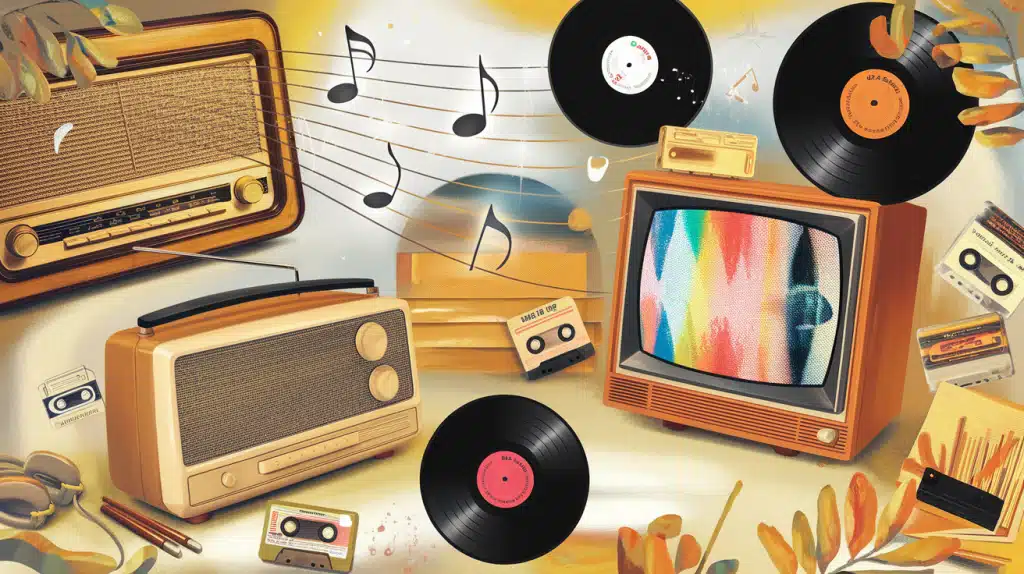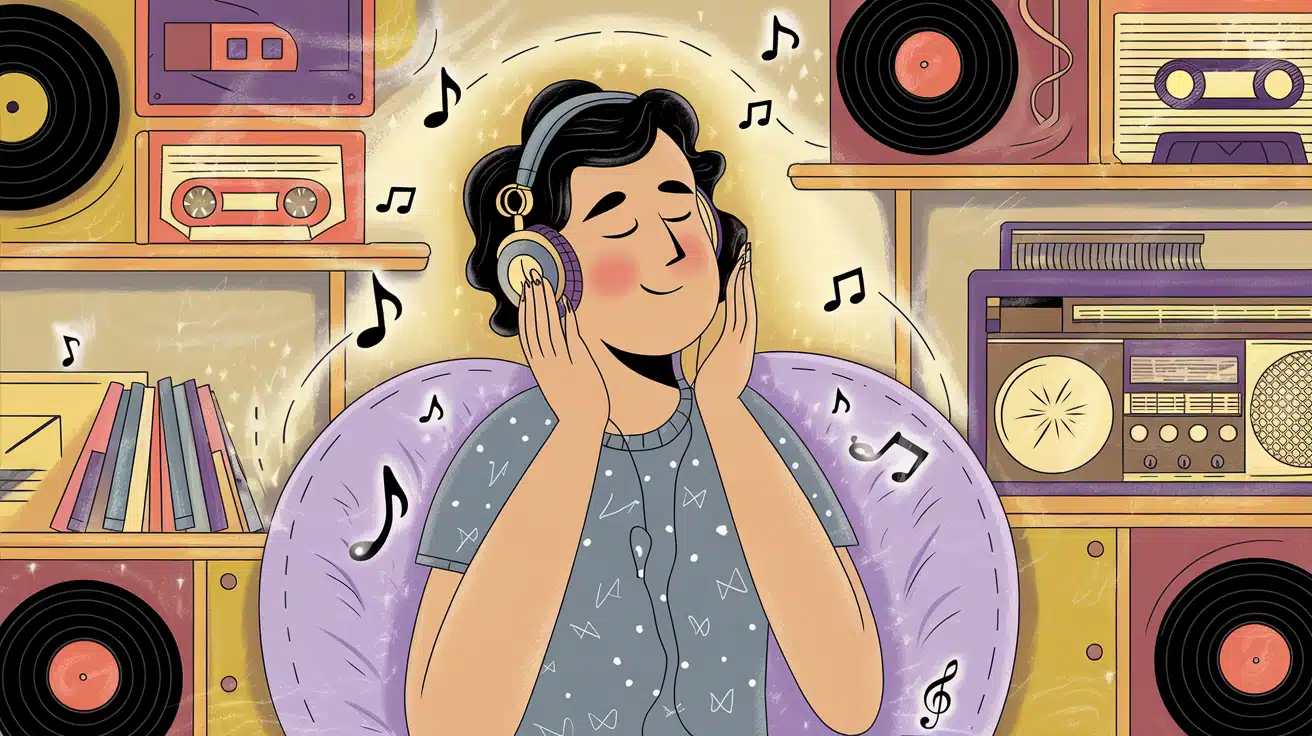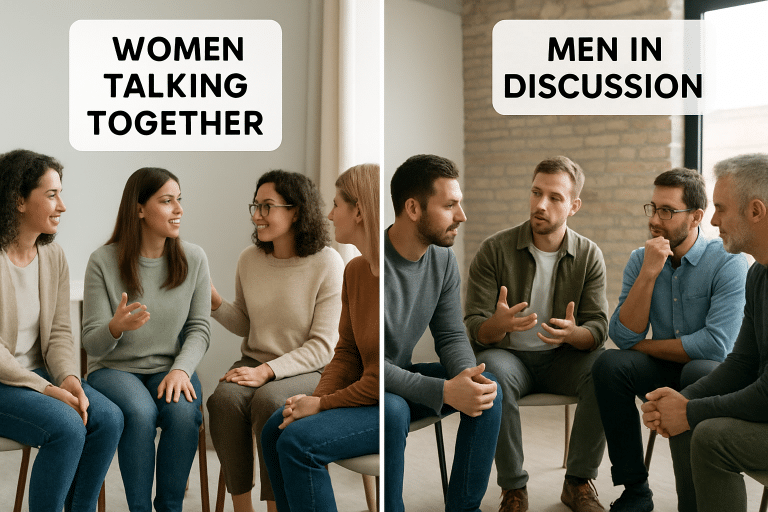Ever wonder why hearing your childhood favorite song makes you smile? Or why does watching that old TV show from the ’90s instantly lift your mood?
You’re not alone. Millions of people turn to throwback music and classic shows when they need comfort.
Nostalgia isn’t just about living in the past; it’s also about embracing the past. It’s a powerful tool that can boost your mental health, reduce stress, and help you feel more connected to yourself.
The science behind why nostalgia feels so good is real and helpful.
In this blog, I’ll explain why throwback content is effective for mental wellness and provide you with simple ways to incorporate it into your daily routine for improved well-being.
The Science Behind Why Nostalgia Feels Good
Your brain loves nostalgia for good reasons. When you think about happy memories, your brain releases feel-good chemicals like dopamine and serotonin. These are the same chemicals that help fight depression and anxiety.
Research shows that nostalgia does three important things for your mind:
- Reduces loneliness – It reminds you of people who care about you
- Boosts self-esteem – You remember times when you felt loved and valued
- Creates meaning – It helps you see your life as a connected story
The key is that nostalgia is most effective when it focuses on relationships and experiences, rather than just objects or places. That’s why a song from your wedding day hits differently than just remembering an old toy.
How Throwback TV Shows Boost Mental Health?
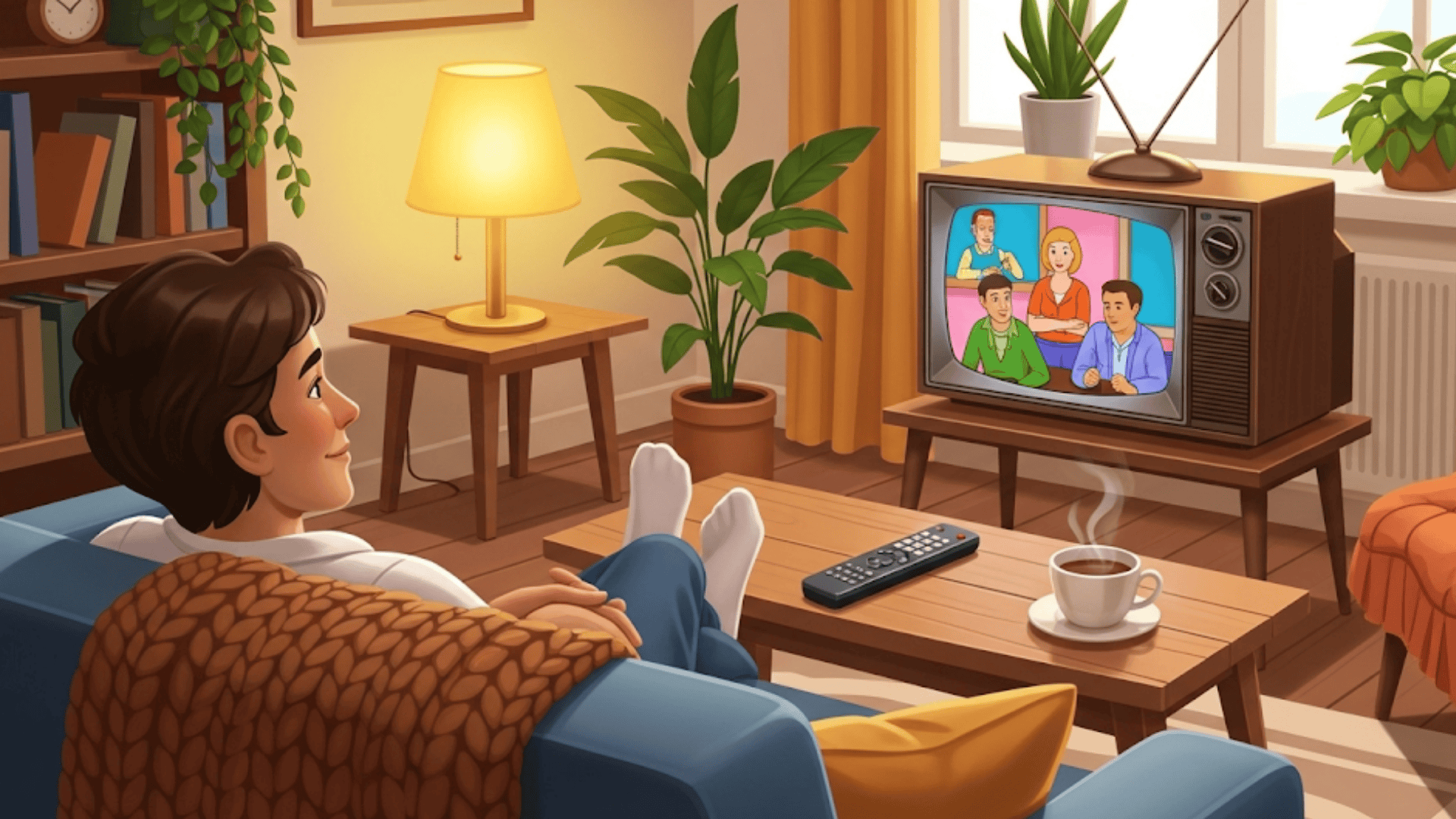
Watching old TV shows does more than kill time. It can actually improve your mental state in several ways:
- Comfort and Safety: Old shows feel predictable and safe. You know the characters will be okay, and there won’t be shocking plot twists. This gives your stressed mind a break from uncertainty.
- Social Connection: Even watching alone, you feel connected to the characters. Your brain treats them like old friends. This can help when you’re feeling isolated or sad.
- Mood Regulation: Familiar shows help control your emotions. Feeling anxious? A calm sitcom can slow you down. Feeling low? An upbeat comedy can lift your spirits.
- Cognitive Rest: Your brain doesn’t need to process new information or follow complex plots. This mental break can help reduce fatigue and recharge you.
- Emotional Stability: Rewatching beloved shows creates a sense of routine and control. This stability can be especially helpful during stressful life changes.
Popular Shows That Help Mental Health
| Show Type | Examples | Mental Health Benefits |
|---|---|---|
| Sitcoms | Friends, The Office | Social connection, gentle humor, stress relief |
| Nature Shows | Bob Ross, Planet Earth | Relaxation, mindfulness, reduced anxiety |
| Classic Cartoons | Tom & Jerry, Looney Tunes | Pure joy, childlike wonder, mood-lifting |
| Feel-Good Dramas | Mr. Rogers, Queer Eye | Self-acceptance, hope, and emotional healing |
The Mental Health Benefits of Nostalgic Music
Music might be even more powerful than TV for mental health. Here’s why your throwback playlist works so well:
- Instant Mood Change: Songs can shift your emotions in seconds. A happy song from your teen years can pull you out of a bad mood faster than almost anything else.
- Memory Triggers: Music has a unique connection to memories. One song can bring back an entire day from your past, complete with the good feelings you had.
- Stress Relief: Familiar music helps lower cortisol (the stress hormone) levels. Your body relaxes because it knows what’s coming next in the song.
- Physical Response: Nostalgic music can slow your heart rate and reduce blood pressure. Your body remembers the feeling of safety and happiness during those times.
- Identity Connection: Songs from your past remind you who you are at your core. This can boost confidence and help you feel more authentic.
Simple Ways to Use Nostalgia for Better Well-Being
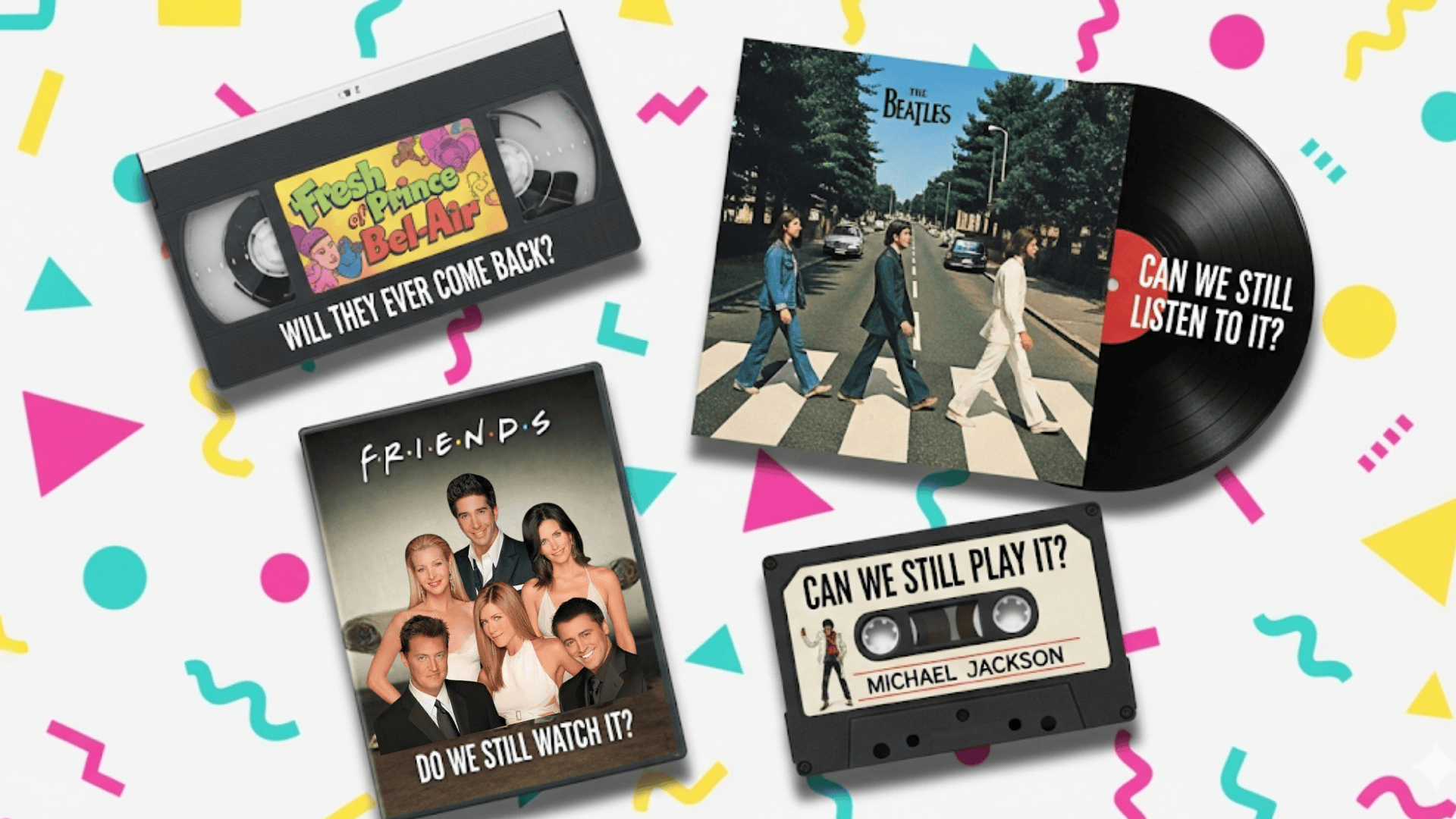
Ready to put nostalgia to work for your mental health? Here are easy methods that really help:
1. Create Mood Playlists
Create different playlists for various needs: an energy boost with upbeat songs from your youth, a calm down with peaceful tracks from good times, and confidence with songs that make you feel strong. Update these playlists regularly to keep them fresh and meaningful.
2. Schedule Nostalgia Time
Set aside 15-30 minutes each week for throwback content. Make it a regular part of your self-care routine, not just something you do when upset. Treat it like a mental health appointment with yourself.
3. Share With Others
Watch old shows or listen to music with friends or family. Sharing nostalgic moments makes them even more powerful for your mental health. You might also create new memories around old favorites this way.
4. Write About Memories
Keep a simple journal to record the good memories that come to mind. Writing them down helps the positive effects last longer and enables you to process emotions more effectively. Focus on how those memories made you feel, not just what happened.
Use Before Stressful Events
Listen to a favorite old song before job interviews or difficult conversations. It can calm your nerves and boost confidence by reminding you of happier times. This technique works because familiar music activates your parasympathetic nervous system.
When Nostalgia Might Not Be Helpful
While nostalgia often benefits mental health, it can sometimes work against you. Watch out for these warning signs:
- Living Only in the Past: If you spend more time thinking about old days than planning for the future, nostalgia might be holding you back from growth.
- Comparing Everything: When nostalgia makes you hate your current life or constantly wish things were different, it’s time to take a break from throwback content.
- Avoiding Current Problems: Using nostalgia to escape real-life issues isn’t healthy in the long term. It should comfort you, not help you avoid dealing with life challenges.
- Feeling Worse After: If throwback content leaves you sad or depressed instead of comforted, you may need to choose different memories or take a break.
- Social Isolation: When you prefer nostalgic content over forming new connections or trying new experiences, it can become unhealthy and limit your social growth.
Making Nostalgia Work for You Long-Term
The best approach treats nostalgia like a tool, not an escape. Use it when you need comfort, motivation, or a sense of connection. But don’t let it replace building new memories.
Balance is Key: Mix Old Favorites with New Content. This keeps nostalgia fresh and prevents you from getting stuck in the past.
Focus on Feelings, Not Things. Remember how the music or show made you feel, not just the specific details. This helps you find those same good feelings in new experiences.
Share Your Discoveries: Introduce your favorite throwback content to younger friends or family. Sharing what you love creates new positive memories around old favorites.
Conclusion
Nostalgia and mental health often work in tandem in powerful ways.
When you understand why throwback TV and music feel so good, you can use them as real tools for better well-being.
The science shows nostalgic content reduces stress, boosts mood, and helps you feel more connected. The key is using nostalgia with purpose, not as an escape.
Create playlists for different moods, schedule regular nostalgia sessions, and share your favorites with the people you care about. Balance throwback content with new experiences as well.
Your mental health deserves every tool that works, and nostalgia is one of the most pleasant ones available. Start small with one of your favorite songs or shows, and notice how it affects your mood.
What’s your go-to throwback song or show when you need a mental health boost?

